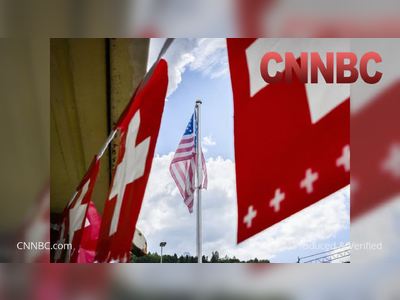Russian Research Vessel 'Yantar' Tracked Mapping Europe’s Subsea Cables, Raising Security Alarms
A months-long voyage by the GUGI-operated vessel has loitered above key cable junctions linking the British Isles and Europe, prompting intensified naval monitoring and calls to harden undersea infrastructure
A vessel nominally described as an ocean research ship has been tracked conducting prolonged, focused surveillance of critical submarine cables and undersea energy infrastructure around northern Europe, stoking urgent security concerns among Western naval and intelligence officials.
The ship, operating with sensors and deep-sea deployment capability, spent months at sea around Norway, the waters off the British Isles and parts of the Mediterranean, repeatedly loitering near known cable junctions that carry internet, commercial and military communications.
Observers report the vessel intermittently deactivated its automatic identification transponder, a manoeuvre normally used to conceal position and course, while satellite imagery and vessel-tracking data placed it for hours at locations where multiple undersea cables converge.
Western defence sources say the platform is run by the Russian directorate that specialises in deep-water research and operations.
That directorate operates independently of Russia’s conventional navy and controls remotely operated vehicles and small submersibles capable of conducting precise undersea work, including inspection, tapping, and the emplacement or removal of devices at depth.
Military analysts and former naval attachés warn that accurately mapping junctions and the topology of cable networks is a strategically significant capability.
In the event of a high-intensity crisis, access to such maps and pre-positioned assets would give a state actor the means to disrupt communications or damage power links at points where the effect would be disproportionate to the physical effort required, degrading information flow, commerce and crisis coordination.
Allied marines and navies have stepped up surveillance and escort activity in areas where the vessel has been detected.
Warships and maritime patrol units have shadowed the research platform and, on occasion, manoeuvred to deter prolonged loitering.
Defence planners in London and other capitals are accelerating programmes to deploy sensors, unmanned systems and rapid-response assets designed to monitor and, if necessary, protect subsea infrastructure.
Government officials and maritime security specialists caution that the current challenge is not only technical but organisational: responsibility for undersea cable protection is dispersed across private owners, national regulators and military authorities, complicating rapid, coordinated responses.
The prospect of deliberate, state-sponsored reconnaissance against subsea networks has intensified calls for clearer legal frameworks, improved public-private information sharing and the expansion of protective patrols and persistent monitoring in vulnerable maritime approaches.
For now, the principal response has been heightened maritime domain awareness and targeted naval patrols where the vessel has been observed.
For Western planners, the episode underlines a broader strategic lesson: critical infrastructure beneath the sea remains exposed in ways that adversaries can exploit, and mitigating that risk will require investment, international cooperation and new doctrines for defending assets that are essential to modern economic and military resilience.
The ship, operating with sensors and deep-sea deployment capability, spent months at sea around Norway, the waters off the British Isles and parts of the Mediterranean, repeatedly loitering near known cable junctions that carry internet, commercial and military communications.
Observers report the vessel intermittently deactivated its automatic identification transponder, a manoeuvre normally used to conceal position and course, while satellite imagery and vessel-tracking data placed it for hours at locations where multiple undersea cables converge.
Western defence sources say the platform is run by the Russian directorate that specialises in deep-water research and operations.
That directorate operates independently of Russia’s conventional navy and controls remotely operated vehicles and small submersibles capable of conducting precise undersea work, including inspection, tapping, and the emplacement or removal of devices at depth.
Military analysts and former naval attachés warn that accurately mapping junctions and the topology of cable networks is a strategically significant capability.
In the event of a high-intensity crisis, access to such maps and pre-positioned assets would give a state actor the means to disrupt communications or damage power links at points where the effect would be disproportionate to the physical effort required, degrading information flow, commerce and crisis coordination.
Allied marines and navies have stepped up surveillance and escort activity in areas where the vessel has been detected.
Warships and maritime patrol units have shadowed the research platform and, on occasion, manoeuvred to deter prolonged loitering.
Defence planners in London and other capitals are accelerating programmes to deploy sensors, unmanned systems and rapid-response assets designed to monitor and, if necessary, protect subsea infrastructure.
Government officials and maritime security specialists caution that the current challenge is not only technical but organisational: responsibility for undersea cable protection is dispersed across private owners, national regulators and military authorities, complicating rapid, coordinated responses.
The prospect of deliberate, state-sponsored reconnaissance against subsea networks has intensified calls for clearer legal frameworks, improved public-private information sharing and the expansion of protective patrols and persistent monitoring in vulnerable maritime approaches.
For now, the principal response has been heightened maritime domain awareness and targeted naval patrols where the vessel has been observed.
For Western planners, the episode underlines a broader strategic lesson: critical infrastructure beneath the sea remains exposed in ways that adversaries can exploit, and mitigating that risk will require investment, international cooperation and new doctrines for defending assets that are essential to modern economic and military resilience.











